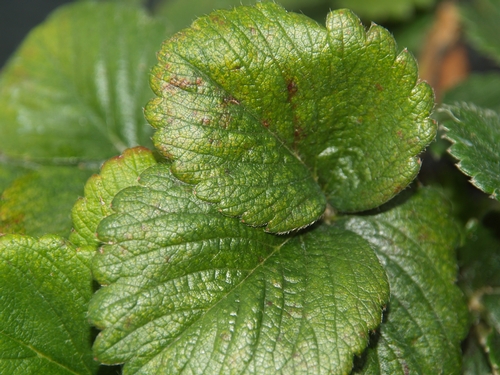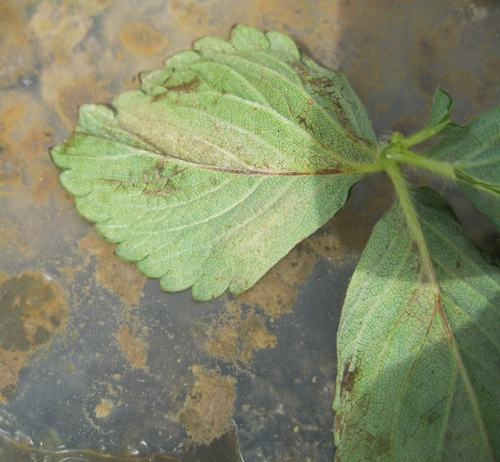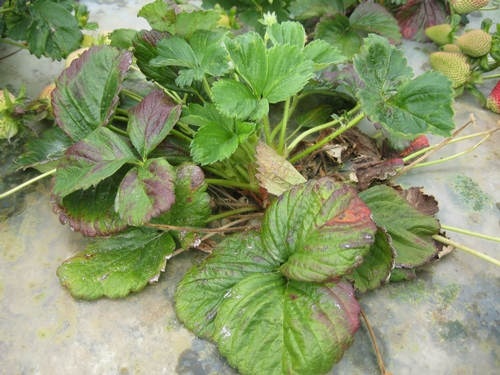New UC short-day variety Benicia (Photo by Surendra Dara)
Different species of spider mites attack strawberry plants. Spider mites feed on the underside of the leaves, scrape the tissue, and suck the plant juices. As a result, corresponding area on the upper leaf surface initially shows yellow spots. As the damage advances, these spots expand and gradually turn into brownish, dry patches of dead plant tissue.
Twospotted spider mite infestation and damage on the lower side of the leaves causes yellow discoloration on the upper side (above) in Albion. Stippling of yellow spots on an infested foliage (below). (Photos by Surendra Dara)
As the damaged tissue dies, brown, dry patches develop on the upper leaf surface in Albion. (Photo by Surendra Dara)
Spider mite damage symptom in Benicia, the new short-day (June-bearing) cultivar from University of California, seems to be different compared to other varieties. While the upper leaf surface corresponding to the damaged lower surface shows initial yellow discoloration even at high mite densities in varieties such as Albion or San Andreas, it turns dark purple in Benicia even at low to moderate mite densities. Physiological response of Benicia to mite damage probably contributes to this unique symptom. Such a discoloration can be useful for early and easy detection of spider mite infestations.
Twospotted spider mite infestation on the lower side of the leaf (above) causes dark purple discoloration of the corresponding upper side (below) in Benicia.
(Photos by Surendra Dara)
Foliar damage symptoms in Benicia by twospotted spider mites.
(Photo by Surendra Dara)
Benicia is adapted for early planting and produces larger fruits with excellent flavor compared to some other short-day varieties.
http://ucanr.edu/articlefeedback







